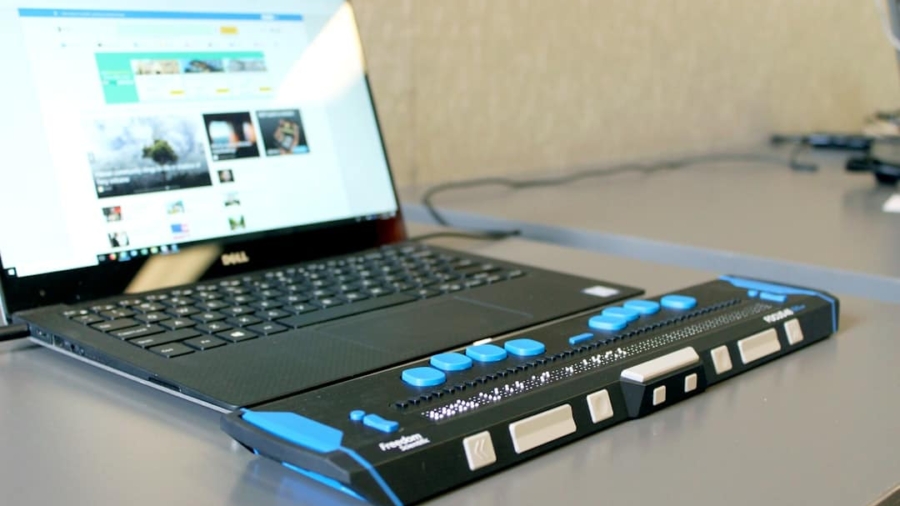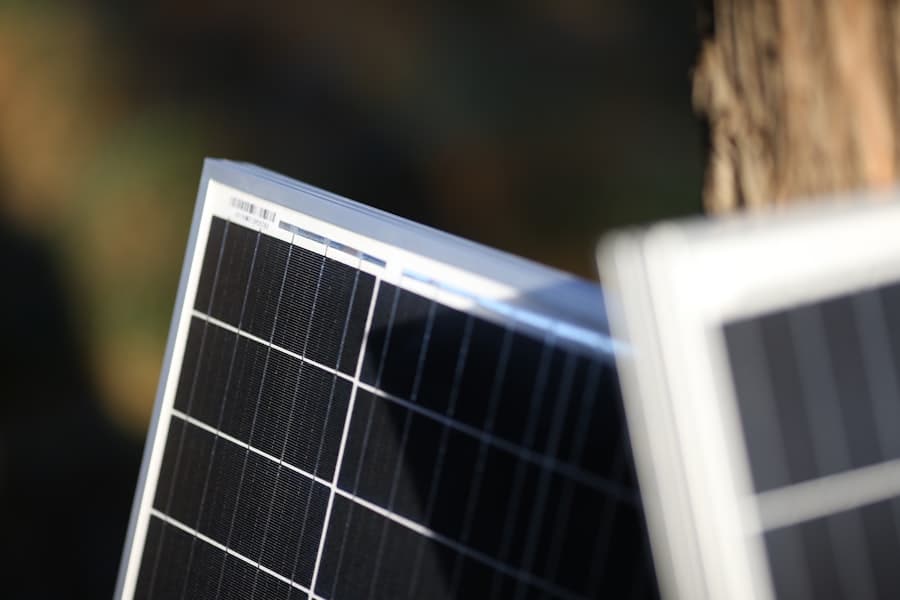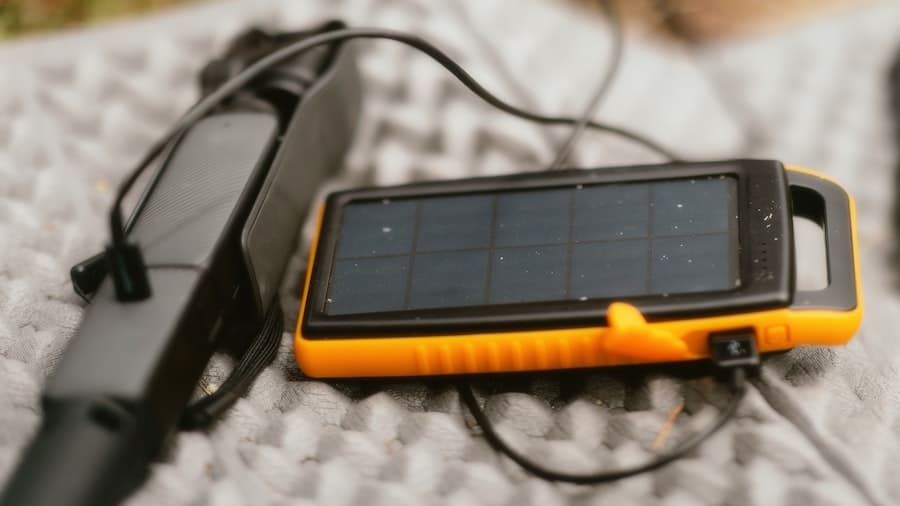In an era where technology permeates every aspect of our lives, the environmental impact of these devices has become a pressing concern. Eco-friendly tech devices are designed with sustainability in mind, aiming to minimize their carbon footprint while maximizing efficiency and functionality. These innovations not only cater to the growing demand for environmentally responsible products but also reflect a broader societal shift towards sustainability.
As consumers become increasingly aware of the ecological consequences of their choices, the market for eco-friendly technology continues to expand, offering a plethora of options that align with green living principles. The development of eco-friendly tech devices encompasses a wide range of products, from energy-efficient appliances to gadgets made from sustainable materials. This movement is not merely a trend; it represents a fundamental change in how technology is conceived, produced, and consumed.
By integrating eco-conscious practices into the design and manufacturing processes, companies are not only addressing environmental concerns but also appealing to a demographic that prioritizes sustainability. As we delve deeper into the various categories of eco-friendly tech devices, it becomes evident that these innovations are paving the way for a more sustainable future.
Key Takeaways
- Eco-friendly tech devices are designed to minimize environmental impact and promote sustainability.
- Energy-efficient gadgets help reduce energy consumption and lower utility bills.
- Sustainable materials in tech devices include recycled plastics, bamboo, and bioplastics.
- Eco-friendly packaging and recycling programs aim to reduce waste and promote responsible disposal of electronic devices.
- Water-saving and water-filtering devices help conserve water and promote clean water access.
Energy-Efficient Gadgets
Advanced Technologies for Energy Efficiency
These innovative devices utilize advanced technologies such as LED lighting, smart sensors, and energy-saving modes to reduce electricity consumption significantly. For instance, energy-efficient appliances like refrigerators and washing machines are engineered to use less energy than their traditional counterparts, often earning Energy Star ratings that signify their commitment to efficiency.
Smart Home Technology for a Sustainable Future
Smart home technology has also played a pivotal role in promoting energy efficiency. Devices such as smart thermostats and smart plugs allow users to monitor and control their energy usage remotely. For example, a smart thermostat can learn a household’s heating and cooling patterns, adjusting temperatures automatically to optimize energy consumption. This not only enhances comfort but also leads to substantial energy savings over time.
Fostering a Culture of Sustainability
Furthermore, integrating energy-efficient gadgets into daily life can create a ripple effect, encouraging others to adopt similar practices and fostering a culture of sustainability within communities. By choosing these appliances, consumers can lower their utility bills while contributing to a reduction in greenhouse gas emissions, ultimately creating a better future for generations to come.
Sustainable Materials in Tech Devices
The choice of materials used in tech devices significantly impacts their environmental footprint. Many manufacturers are now prioritizing sustainable materials in their production processes, opting for recycled plastics, biodegradable components, and responsibly sourced metals. For instance, some smartphone companies have begun using recycled aluminum for their device casings, reducing the need for virgin materials and minimizing waste.
This shift not only conserves natural resources but also decreases the energy required for extraction and processing. Moreover, the use of biodegradable materials is gaining traction in the tech industry. Companies are exploring alternatives to conventional plastics that can break down naturally over time, reducing pollution and landfill waste.
For example, some manufacturers have developed phone cases made from plant-based materials that decompose when disposed of properly. This innovation highlights the potential for technology to coexist harmoniously with nature, as it addresses both functionality and environmental responsibility. By choosing devices made from sustainable materials, consumers can support companies that prioritize eco-friendly practices and contribute to a circular economy.
Eco-Friendly Packaging and Recycling Programs
The environmental impact of tech devices extends beyond their production and use; packaging plays a crucial role in their overall sustainability. Many companies are rethinking their packaging strategies by opting for eco-friendly materials such as recycled cardboard and biodegradable plastics. This shift not only reduces waste but also minimizes the carbon footprint associated with packaging production and disposal.
For instance, some brands have eliminated plastic from their packaging entirely, using innovative designs that protect products while being environmentally responsible. In addition to sustainable packaging, recycling programs are essential for promoting responsible disposal of tech devices. Many manufacturers now offer take-back programs that allow consumers to return old devices for recycling or refurbishment.
These initiatives help divert electronic waste from landfills, where it can leach harmful chemicals into the environment. For example, Apple’s recycling program encourages customers to return their old devices in exchange for credit towards new purchases. This not only fosters a culture of recycling but also ensures that valuable materials are recovered and reused in new products.
By participating in these programs, consumers can play an active role in reducing electronic waste and supporting a more sustainable tech ecosystem.
Water-Saving and Water-Filtering Devices
Water scarcity is an increasingly pressing global issue, making water-saving technology essential in both residential and commercial settings. Eco-friendly tech devices designed to conserve water include low-flow faucets, showerheads, and toilets that significantly reduce water usage without sacrificing performance. For instance, modern low-flow showerheads can cut water consumption by up to 50% while still providing a satisfying shower experience.
These innovations not only help conserve precious water resources but also lower utility bills for consumers. In addition to water-saving devices, water-filtering technologies have gained popularity as people seek cleaner drinking water without relying on single-use plastic bottles. Advanced filtration systems utilize various methods such as reverse osmosis and activated carbon to remove contaminants from tap water, providing safe drinking water while reducing plastic waste.
Brands like Brita offer pitcher filters that are both effective and environmentally friendly, allowing users to enjoy clean water without contributing to plastic pollution. By investing in water-saving and filtering devices, consumers can make a significant impact on water conservation efforts while enjoying the benefits of clean water.
Solar-Powered and Hand-Cranked Devices
Solar-powered devices represent one of the most innovative solutions in the realm of eco-friendly technology. By harnessing the sun’s energy, these gadgets provide a renewable power source that reduces reliance on fossil fuels. Solar chargers for smartphones and tablets are becoming increasingly popular, allowing users to charge their devices on-the-go without drawing electricity from the grid.
For example, portable solar panels can be used during outdoor activities like camping or hiking, providing a sustainable way to keep devices powered without contributing to environmental degradation.
These gadgets rely on human power rather than electricity or batteries, making them ideal for emergency situations or remote locations.
Hand-cranked flashlights and radios are excellent examples of this technology; they provide essential functions without requiring external power sources. Such devices not only promote self-sufficiency but also encourage users to consider their energy consumption habits more critically. By incorporating solar-powered and hand-cranked devices into daily life, individuals can embrace sustainable practices while enjoying the convenience of modern technology.
Eco-Friendly Tech for Home and Office
The integration of eco-friendly technology into home and office environments is becoming increasingly feasible as more options become available on the market. Smart home systems allow users to monitor energy consumption across various appliances, enabling them to make informed decisions about their usage patterns. For instance, smart lighting systems can be programmed to turn off automatically when rooms are unoccupied or adjust brightness based on natural light levels, significantly reducing energy waste.
In office settings, eco-friendly tech can enhance productivity while promoting sustainability. Energy-efficient computers and printers consume less power without compromising performance, while digital document management systems reduce paper usage by facilitating electronic filing and sharing. Additionally, many companies are adopting green building practices by incorporating sustainable materials into their office designs and utilizing renewable energy sources such as wind or solar power.
By embracing eco-friendly technology in both home and office environments, individuals and organizations can contribute to a more sustainable future while enjoying the benefits of modern conveniences.
Conclusion and Recommendations for Eco-Friendly Tech Devices
As we navigate an increasingly technology-driven world, the importance of eco-friendly tech devices cannot be overstated. The innovations discussed throughout this article highlight the potential for technology to align with environmental stewardship while enhancing our daily lives. From energy-efficient gadgets to sustainable materials and recycling programs, there are numerous ways consumers can make informed choices that support sustainability.
To further promote eco-friendly practices, individuals should consider investing in energy-efficient appliances when upgrading their homes or offices. Additionally, seeking out products made from sustainable materials can help reduce overall environmental impact. Participating in recycling programs ensures that old devices are disposed of responsibly rather than contributing to electronic waste.
By embracing solar-powered or hand-cranked alternatives when possible, consumers can reduce reliance on traditional power sources. Ultimately, the shift towards eco-friendly technology is not just about individual choices; it represents a collective movement towards a more sustainable future. By prioritizing eco-friendly tech devices in our purchasing decisions and advocating for responsible practices within our communities, we can contribute to a healthier planet for generations to come.
If you’re interested in eco-friendly tech devices, you may also want to check out this article on the best free software for 3D modeling in 2023.
Additionally, you might be interested in learning about the best shared hosting services in 2023 to ensure your website is running efficiently and environmentally friendly. For more tech-related content, be sure to explore Hacker Noon, which covers a wide range of topics across the tech sector.
FAQs
What are eco-friendly tech devices?
Eco-friendly tech devices are electronic gadgets and products that are designed and manufactured with a focus on reducing their environmental impact. This can include using sustainable materials, energy-efficient designs, and minimizing electronic waste.
What are the benefits of using eco-friendly tech devices?
Using eco-friendly tech devices can help reduce energy consumption, minimize electronic waste, and lower the overall environmental impact of technology. These devices often have longer lifespans and are designed to be more energy-efficient, saving both resources and money in the long run.
What are some examples of eco-friendly tech devices?
Examples of eco-friendly tech devices include solar-powered chargers, energy-efficient LED light bulbs, eco-friendly smartphones, laptops made from recycled materials, and smart home devices that help reduce energy consumption.
How can I identify eco-friendly tech devices?
Look for products that are certified by reputable organizations such as Energy Star, EPEAT, or the Electronic Product Environmental Assessment Tool (EPEAT). Additionally, check for product labels or marketing materials that highlight the device’s eco-friendly features and materials.
Are eco-friendly tech devices more expensive?
While some eco-friendly tech devices may have a higher upfront cost, they often provide long-term savings through reduced energy consumption and longer lifespans. Additionally, as demand for eco-friendly products increases, prices are becoming more competitive with traditional tech devices.



